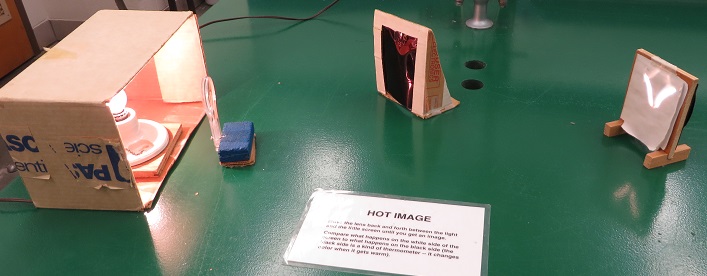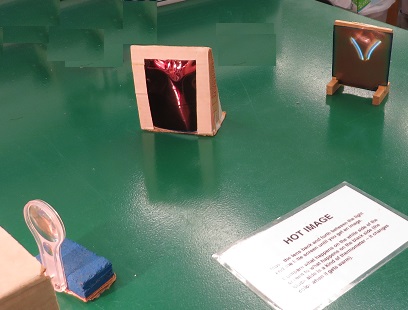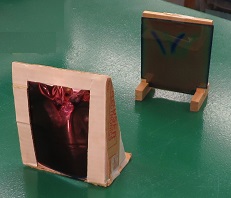
Instructions for:
Hot Image

In this picture the screen has been replaced by a temperature "liquid crystal" temperature sensitive sheet. It turns green or blue when it is warm. The energy delivered by the light warms the sheet, and makes a temporary photograph of the filament.

Now a filter has been put in the way. It is a sandwich of a red color filter and blue color filter. Very little visible light gets through. But the temperature sensitive sheet still changes color, because the sandwich still transmits infrared light.
This illustrates why incandescent light bulbs are becoming obsolete: for every dollar's worth of electricity you put in, an incandescent light gives you less than two cents worth of light and 98 cents of heat and infrared light. Fluorescent light bulbs give you 7 times as much light for the same dollar.
This activity makes several interesting points:
Problems with this activity:
Copyright 2014 Joseph Straley - The University of Kentucky Physics Petting Zoo